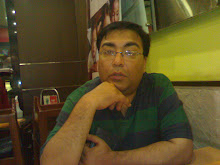 The whole of the last week The Hindustan Times carried a series of stories highlighting incidents of 'negligence' in high profile private hospitals in Delhi. The hospitals featured included Fortis Escorts Hospital, Max Hospitals, Apollo Hospital, Sir Gangaram Hospital and Rajiv Gandhi Cancer Hospital. Now these hospitals in Delhi are the best that we have. While, Hindustan Times has a right to expose cases of negligence in hospitals I am still not sure what purpose was served by these reports.
The whole of the last week The Hindustan Times carried a series of stories highlighting incidents of 'negligence' in high profile private hospitals in Delhi. The hospitals featured included Fortis Escorts Hospital, Max Hospitals, Apollo Hospital, Sir Gangaram Hospital and Rajiv Gandhi Cancer Hospital. Now these hospitals in Delhi are the best that we have. While, Hindustan Times has a right to expose cases of negligence in hospitals I am still not sure what purpose was served by these reports.
Here are a couple of points I would like to make about these 'exposes'.
The cases reported highlighted horrific experiences consumers had in these hospitals. Most people featured in the story lost a loved one because the hospital failed to deliver adequate care and refused to take responsibility for what went wrong. These I am afraid were random cases picked up by intrepid journalists and made for riveting reading. However, the journalists doing these stories did not investigate the reason for these failures. The question why did these hospitals fail in their duty towards their patients remains unanswered. Was the failure a result of a doctor not discharging his duties properly, or was it a failure of the hospitals processes or both? Or was it negligence or an error of judgement on the part of a doctor? Did he deliberately mistreat a patient, was callous in discharging his duties, wilfully deviated from standard medical practices or just did not care enough?
The reports also did not establish a trend. By picking up five hospitals in the city and highlighting these horrific cases, I am not too sure the point that the newspaper has made. Are all these hospitals equally bad? Do we run a huge risk to life and limb if we trust these hospitals with our care? The stories were short on data. For example the story featuring the eminent cardiologist Dr. Ashok Seth, presently the Chairman of the cardiac program at Fortis did not establish how many times has he messed up an angioplasty. By highlighting a single botched up case amongst the thousands that Dr. Seth does every year, I believe the journalist has been less than fair to him. I would like to know Dr. Seth's success rate in deciding whether I trust him or not rather than go by a sensational story of an angioplasty and the subsequent care going haywire.
As consumers we must understand an ugly truth. There is no running away from the fact that cases of utter negligence and mind boggling errors are a part and parcel of life in a hospital. Even the best hospitals, will have some people who would take their work casually, be negligent in their duties and cause terrible suffering and yes loss of life because of their actions. At best a hospital can try to minimise these as best as it can. It can systematically identify such people and eliminate them, it can put in place systems and processes, which allow it to act before the damage is done. However, it is next to impossible to completely do away with error and negligence.
I just do not understand what point has been established by The Hindustan Times in doing these stories. Yes, it establishes the fact that some of our best hospitals in Delhi have been at times negligent in the discharge of their duties causing untold suffering to people, who trusted these hospitals.
But isn't it something that all of us know and isn't that true of all the hospitals in the world?
Wouldn't it make more sense if the newspaper clearly established a trend of deficient care in one or all of these hospitals over a period of time and compare the hospital's record with that of other similar hospitals across the world. It would than stand to reason for citizens to avoid the hospital and for the management of the hospital to fix its people and systems.
 Swine flu has finally arrived in India.
Swine flu has finally arrived in India. Here is an interesting exercise that I recommend hospital marketers to try out with their colleagues in the hospital. Select a group of 30 individuals working in the hospital, preferably those who handle customers. Include in the group a few medical folks, doctors, nurses, front office executives, billing executives, F&B personnel and a few guys from housekeeping. Ask them simple questions on what the hospital brand means to them.
Here is an interesting exercise that I recommend hospital marketers to try out with their colleagues in the hospital. Select a group of 30 individuals working in the hospital, preferably those who handle customers. Include in the group a few medical folks, doctors, nurses, front office executives, billing executives, F&B personnel and a few guys from housekeeping. Ask them simple questions on what the hospital brand means to them. The other day I was at the Delhi airport early in the morning waiting for the security check to get over, when I realised there was some commotion ahead in the queue. As I moved on, I saw a man flat on his back, and a lady, apparently an air hostess trying to revive him by administering the CPR. There were a bunch of people including some security men looking on. The lady was doing her best, but it was quite apparent that she would not succeed. She appeared to be going through the motions rather than making a desperate attempt to save a life.There was no one else to help her, while many watched idly. I did not see any medical personnel or the emergency medical paraphernalia, that one would expect on such an occasion. The man had been without a pulse for almost 20 minutes, before CPR had commenced.
The other day I was at the Delhi airport early in the morning waiting for the security check to get over, when I realised there was some commotion ahead in the queue. As I moved on, I saw a man flat on his back, and a lady, apparently an air hostess trying to revive him by administering the CPR. There were a bunch of people including some security men looking on. The lady was doing her best, but it was quite apparent that she would not succeed. She appeared to be going through the motions rather than making a desperate attempt to save a life.There was no one else to help her, while many watched idly. I did not see any medical personnel or the emergency medical paraphernalia, that one would expect on such an occasion. The man had been without a pulse for almost 20 minutes, before CPR had commenced.